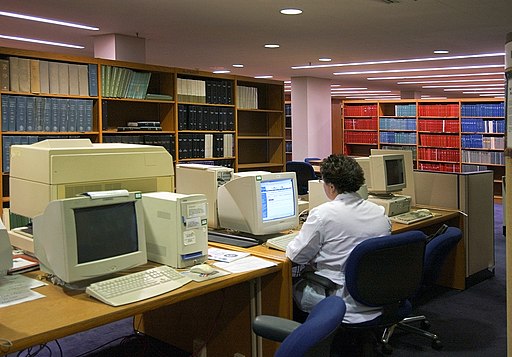Danielle Bork
September 20, 2011
Article Review #1
(2010). State of america's libraries: usage soars, funding shrinks. American Libraries, 41 no 5(My 2010), 13-14. Retrieved from http://vnweb.hwwilsonweb.com.proxy.lib.wayne.edu/hww/results/external_link_maincontentframe.jhtml?_DARGS=/hww/results/results_common.jhtml.44
Introduction:
This article focuses on the nation’s libraries and, as patron usage skyrockets, the funding for these institutions continues to decline. With a decline in employment and the economy, library utilization has increased dramatically. People are coming to the library in order to find information and seek help in both employment and educational areas. However, with an increase in use did not come with an increase in funding. With a growing community demand for services and no money to expand staff, resources or to acquire new materials, public and state libraries are reporting cuts in their funding.
I haven’t nailed down a firm research question, but I want to focus on the lack of funding and how libraries are coping with being understaffed and having to provide more services to more customers.
Problem Statement:
Even though more and more patrons are frequenting libraries, their budgets are being cut, rather than added to. This article explores the numbers behind the cuts and some of the effects it’s having.
Literature Review:
This article draws upon data that is detailed in the 2010 State of America’s Libraries report that was released by the American Library Association. It references other works put out by The National Center for Education Statistics, January 2010 Harris Interactive poll, as well as the USA Patriot Act.
Method:
The population takes into account 223 million Americans and public libraries across the country. The data sources take into account what areas patrons seek help in when they come to a library (or consult a reference desk). It looks into the type of materials that the library spends its budgets on, what items it has let laps, usages over the recent years, as well as the ethnicities that are using the library and how they utilize things differently. The collection came from libraries taking part in the yearly ALA survey.
Caveat:
The most obvious limitation to the report is that it only takes into account data that was from one specific study. While it was compiled by the ALA, who’s exceedingly credible, it does not take into account other perspectives or contributions. That is fine for this particular study, due to the fact that its main focus was, indeed, this specific study.



